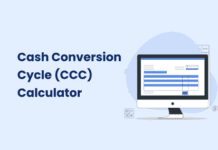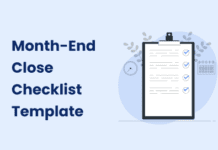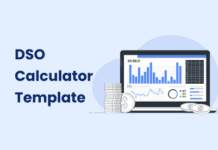Purchase orders play a crucial role in the procurement process, as they act as formal agreements between businesses and their suppliers. These documents outline essential details, such as the type, quantity, and price of the products or services being purchased.
Understanding the different types of purchase orders and their importance in the procurement and financial management of a business is essential for smooth operations.
In this article, we will discuss key purchase order terms, four types of purchase orders, and the reasons why your business needs a purchase order system.
Purchase Order Terms
Before learning different types of purchase orders, let’s understand the basic terms first:
- Legally Binding: A purchase order acts as a legally binding contract between the buyer and the supplier. Once both parties sign the document, they are obligated to adhere to the terms and conditions outlined in the purchase order.
- Encumbrance: An encumbrance refers to the funds that are set aside to cover the cost of a purchase order. This ensures that the business has sufficient resources to pay for the goods or services being procured.
- Release: Release refers to the process of finalizing and approving a purchase order after the successful fulfillment of a previous purchase order or after meeting certain criteria.
- Accounting Distributions: Accounting distributions involve allocating monetary amounts to specific general ledger (GL) accounts in a purchasing context. This process allows for better categorization of documented expenditures, ensuring funds are set aside for vendor payments after a purchase order is completed.
4 Types of Purchase Orders
There are mainly four different types of purchase orders:
- Standard Purchase Order (PO)
- Planned Purchase Order (PPO)
- Blanket Purchase Order (BPO)
- Contract Purchase Order (CPO)
Let’s take a look at the different types of purchase orders in detail.
1. Standard Purchase Order
A standard purchase order (PO) is typically created for one-time purchases of items. These orders are usually placed with suppliers that aren’t long-term collaborators or for items that aren’t purchased regularly.
Some of the critical aspects of a standard purchase order include:
- Item or service description: A detailed description of the products or services being purchased is essential for clear communication between the buyer and the supplier.
- Quantity: The exact quantity of items or services required is specified to avoid misunderstandings or discrepancies in the order.
- Price: The agreed-upon price for the items or services is documented to ensure transparency and accountability.
- Delivery schedule: The delivery date or timeframe is mentioned, ensuring that the supplier meets the buyer’s expectations and deadlines.
- Payment terms and credit period: Standard purchase orders establish the payment terms, including the desired credit period, to help maintain a healthy cash flow for the business.
Here are some examples of a standard purchase order:
- A manufacturing company creates a PPO for raw materials needed over the next six months, with specific delivery dates and estimated quantities based on projected demand.
- A business purchasing office furniture, which doesn’t require frequent replacement, would use a standard purchase order.
Creating a purchase order with a clear format will streamline procurement processes. To do so, try out the PO generation tool that Peakflo provides to create any type of purchase request with comprehensive details and automate data entry with higher accuracy using our OCR (Optical Character Recognition) technology.
2. Planned Purchase Order
A planned purchase order (PPO) resembles a standard PO but lacks specified delivery details. PPOs function as separate orders, initiated as business needs emerge.
PPOs are designed to be released when needed, with the timing of their release being a crucial aspect. PPOs may include unconfirmed tentative schedules for deliveries, but these must be verified through a release before the order is confirmed and ready for delivery.
Here’s a breakdown of the PPO structure:
- Terms and conditions: These outline the legal framework and obligations for both parties, including payment terms, warranties, and dispute resolution processes.
- List of items: This provides a clear and detailed description of the products or services being procured, ensuring both parties have a mutual understanding of the order.
- Quantity: Specifying the exact quantity of each item helps avoid misunderstandings and ensures the supplier can meet the buyer’s demands.
- Price: Including the agreed-upon price for each item in the order maintains transparency and accountability, preventing potential disputes or confusion.
- An unconfirmed, tentative delivery date for each item (or for the entire PO): This provides an estimated timeframe for when the items should be delivered, allowing both parties to plan accordingly. However, as it is unconfirmed, it is subject to change based on further agreement.
- An unconfirmed, tentative delivery location for each item (or for the entire PO): This indicates the estimated delivery location for the items, giving the supplier an idea of where the goods should be shipped. Like the delivery date, the tentative delivery location is subject to change upon further agreement.
Examples of planned purchase orders:
- A clothing store expects high demand for winter clothes soon. They create a planned purchase order (PPO) for winter items. As demand increases, they release the PPO in parts, specifying delivery details as needed.
- A construction company has a multi-phase project and needs materials like cement and steel throughout. They create a PPO with their supplier and release parts of it as each phase starts, specifying quantities and delivery details accordingly.
As a PPO is highly dependent on timing, make sure to incorporate automated AP workflows into your organizational approval matrix and eliminate any delays along the way.
3. Blanket Purchase Order (BPO)
A blanket purchase order (BPO), or “standing order,” is an agreement with a vendor for future purchases where item quantities are unknown. BPOs share similar details with PPOs but leave item quantities and delivery specifics unspecified.
Releases against a BPO are called “blanket releases.” Typically, a BPO has a maximum validity period and quantity limit, with potential discounts based on item quantity milestones throughout the BPO’s lifespan.
Here’s a breakdown of the components of a blanket purchase order:
- Terms and conditions: These outline the legal framework, responsibilities, and obligations for both parties involved in the transaction. Terms and conditions may include payment terms, warranties, dispute resolution processes, and other essential aspects governing the business relationship.
- List of items: This is a detailed and clear description of the products or services being procured, ensuring both the buyer and the supplier have a mutual understanding of the order. It helps to avoid misunderstandings and ensures the supplier can fulfill the buyer’s requirements.
- Discounts: Discounts refer to any reductions in price or special offers provided by the supplier, often based on factors such as order quantity, frequency, or long-term relationships. Discounts can help businesses save money and encourage loyalty between the buyer and the supplier.
- Pricing: Pricing refers to the agreed-upon cost of each item or service included in the order. It is essential for maintaining transparency and accountability between both parties, helping to prevent potential disputes or confusion.
Examples of blanked purchase orders:
- A restaurant sets up a blanket purchase order (BPO) with a supplier for a year to buy fresh produce without specifying quantities or delivery details. They create blanket releases as needed, with quantities and delivery information based on inventory requirements.
- An electronics manufacturer creates a six-month BPO with a vendor for components without specifying quantities or delivery details. As production demands change, they issue blanket releases with necessary quantities, delivery dates, and locations for a continuous supply.
4. Contract Purchase Order (CPO)
A contract purchase order (CPO) is an agreement outlining future purchase orders and their guidelines. It only specifies the negotiated terms and conditions between a business and a vendor, with minimal detail.
Unlike other purchase orders, CPOs aren’t released but help set up future orders.
A CPO typically contains a collection of negotiated and agreed-upon terms and conditions that serve as a foundation for generating future purchase orders.
Examples of a contract purchase order:
How Does a Purchase Order Work?
Here’s how the purchase order works:
Creation: The purchase order process starts as the buyer creates a detailed document outlining the required goods or services, including quantities, agreed-upon prices, and essential terms. This order is then sent to the seller for review and acceptance.
Approval: Upon receiving the purchase order, the seller evaluates its terms. If they align with the seller’s offerings and business conditions, the order is approved, signifying the seller’s commitment to fulfilling the requested items or services.
Delivery: Once the purchase order is approved, the seller proceeds to assemble or prepare the requested products or services according to the specifications. After completion, the goods are dispatched, or services are rendered to the buyer. Following this, the seller issues an invoice specifying payment details based on the purchase order.
Conclusion
The standard purchase order is an essential tool for businesses looking to make one-time purchases with suppliers they may not have an ongoing relationship.
By providing clear and specific information, these orders help ensure that both parties are on the same page, reducing the risk of miscommunication and facilitating a smooth procurement process.
Understanding the nuances of standard purchase orders can be invaluable for businesses aiming to optimize their purchasing strategies and maintain strong relationships with their suppliers.
Purchase order plays an important part in a lot of the company’s internal functions, namely inventory, supplier, and budgeting management. If not handled correctly, the company will have issues with its financial planning as a whole.
Having a centralized system to manage your procure-to-pay will facilitate your internal team with a full suite of automation that’ll streamline end-to-end finance ops. With Peakflo’s Accounts Payable solution, procurement and finance teams will be able to create POs, PPOs, BPOs, and CPOs effortlessly. The solution allows approvers to instantly check and approve POs, with their e-signatures added to the PO automatically.
Try out Peakflo today, and witness how the highest standards of data keeping, accuracy, management, and synchronization can transform the way you work.









![Why AI Sales Calls Are Making Good Sales Reps Even Better [2025 Guide] ai sales calls](https://cdn-kmjmp.nitrocdn.com/YvtqmrsiHUxqerlSiZgbfzqqTARWTElr/assets/images/optimized/rev-834053b/blog.peakflo.co/wp-content/uploads/2025/09/65168cf6-3001-4733-8cbc-12d5684cf449-218x150.webp)

































